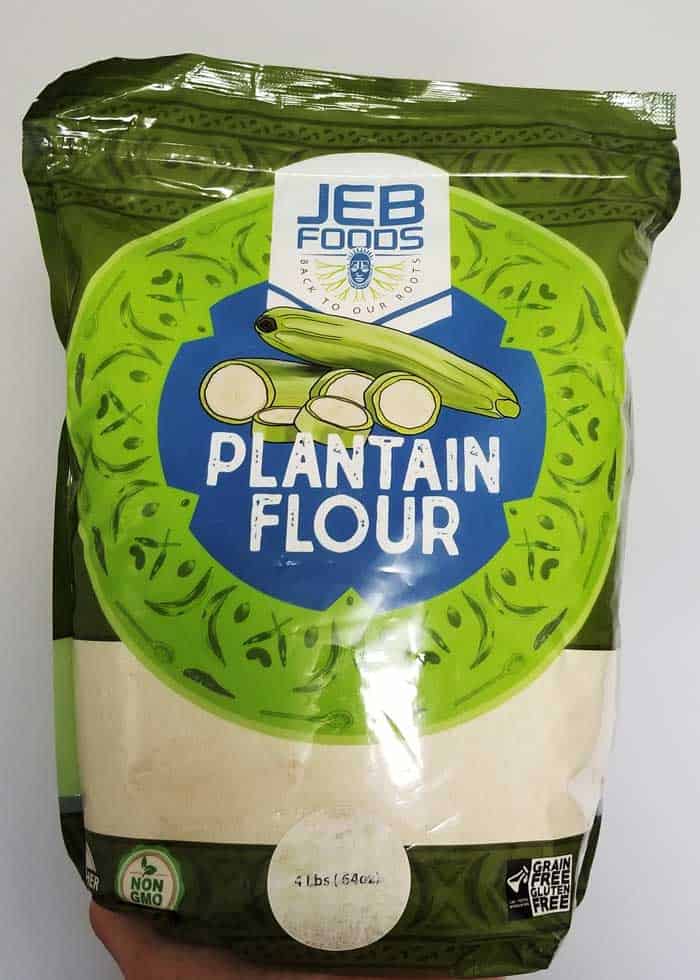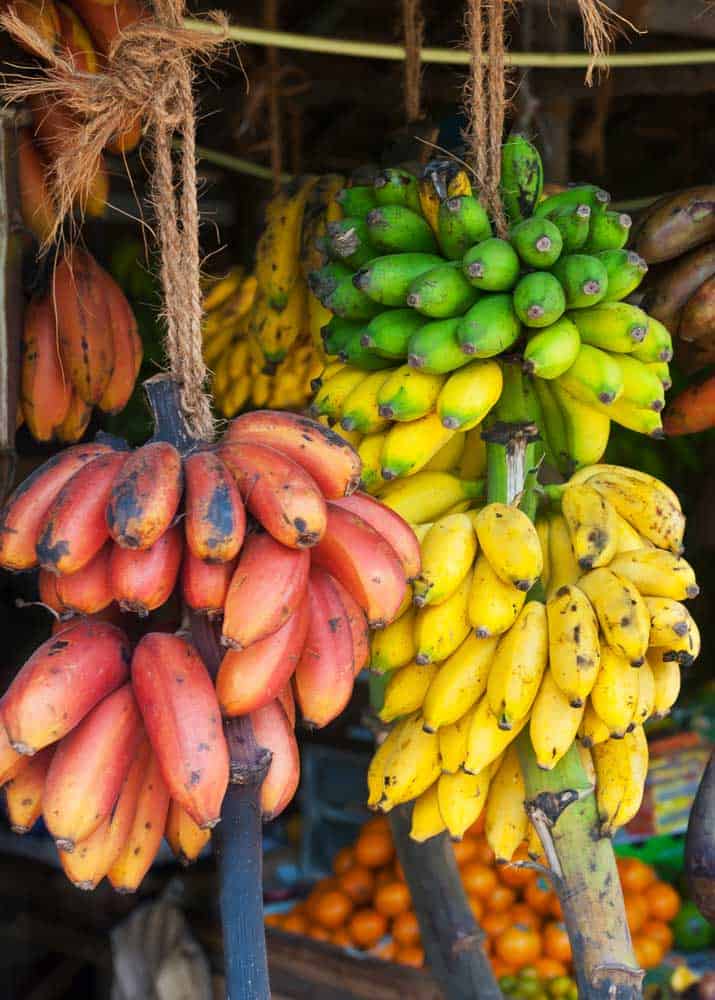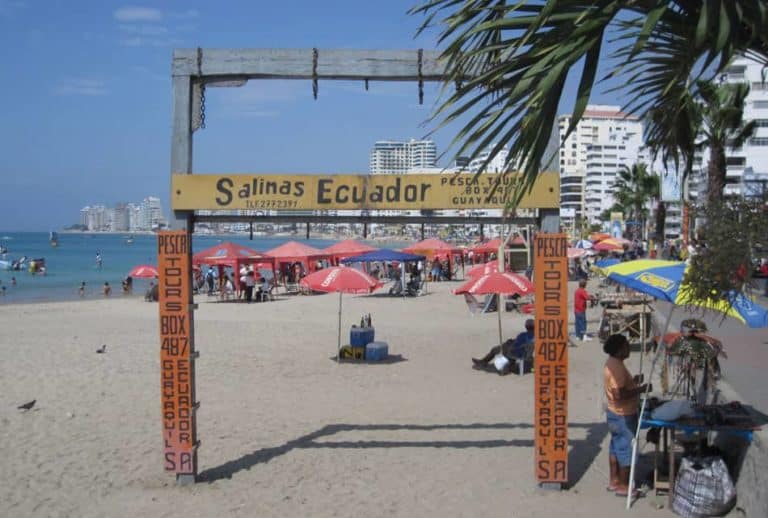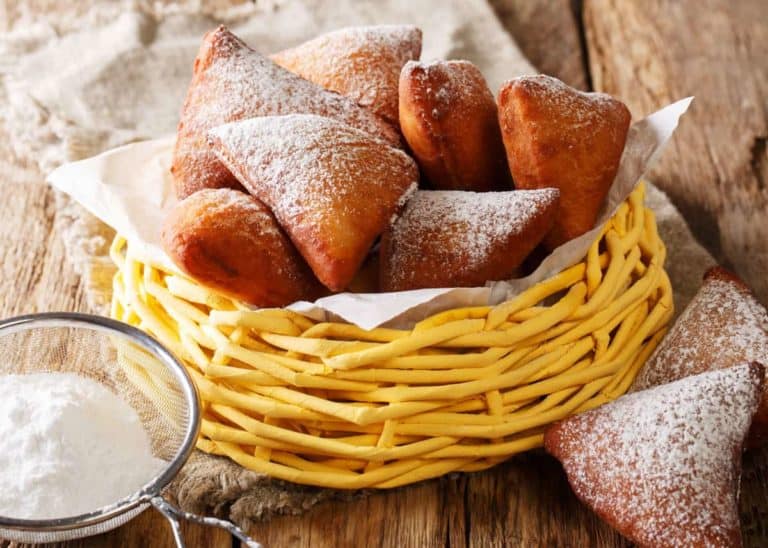Plantain vs Banana: 9 Tasty Differences (Travelers Guide)
What’s the difference between plantains and bananas? In this article, you’ll learn 9 key differences between these two fruits. In the plantain vs banana debate, you’ll be able to tell them apart and know when to use each.
9 Differences: Plantains vs Bananas
They may look alike, but if you substituted plantains in a dessert recipe for bananas, you would definitely know there is a difference in the taste.
Here are 9 differences between plantains and bananas.
1. Color
Plantains and bananas both change in color as they ripen from green to yellow to yellow with dark brown spots.
While a black banana will turn most stomachs, a black plantain is super sweet and ready for cooking.
The color of both plantains and bananas gives you an idea of how they will taste throughout the ripening process. When green, they both taste bland but sweeten more as they ripen.
- When raw, fully ripened bananas are much sweeter than ripened plantains.
- When cooked, a ripe plantain becomes very sweet. My favorite is deep fried, but baked is also amazing.
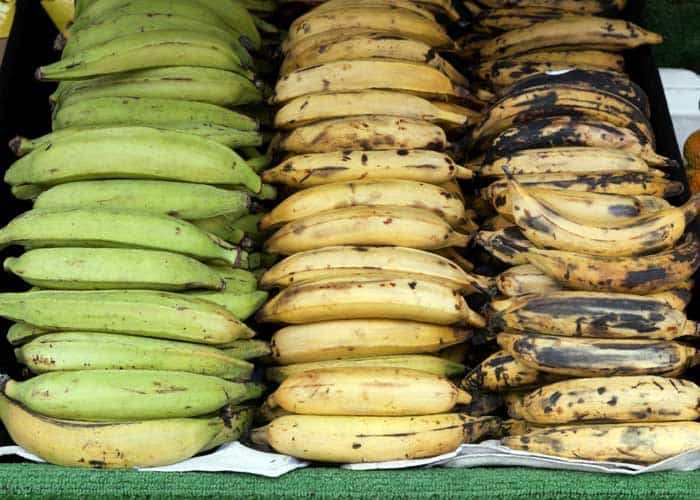
2. Peel
Other than color, the peeling is a simple way to determine a plantain vs banana. The skin of plantains is much thicker than a banana and harder to peel. In fact, you may have to use a knife to peel a plantain if it’s not fully ripened.
In contrast, bananas have a smoother, thinner skin that can be a little difficult to peel when green but easy to remove when yellow.
3. Size
Plantains are usually heavier and longer than bananas, growing to about 12 inches in length while bananas average six inches in length.
4. Starch content
Somewhat like potatoes, plantains contain more starch than bananas. In green plantains, you have a high content of resistant starch, which keeps you feeling full and satisfied longer and boosts metabolism.
Green plantains are often used to make flour. I love pancakes made with plantain flour.
5. Eating Raw or Cooked
How you eat them is the biggest difference between plantain vs banana. You can easily eat bananas raw or cooked. But you’ll need to cook plantains before you eat them because they’re tough, starchy and bitter when raw.
6. Cooking methods
Another major difference between the plantain vs banana is the cooking method. Because bananas are soft and sweet, they can be eaten raw, cooked or frozen. Bananas are often used in desserts and baked goods like puddings, pies, cakes, and muffins. They’re also eaten raw in cereals, oatmeal and fruit salads. Frozen bananas are a popular ingredient in smoothies.
Plantains are boiled, fried, roasted and baked as a savory side or combined with rice, stew or potatoes and other vegetables. In some parts of Latin America and Africa, plantains are called the “cooking bananas” because they require cooking before eating.
Both plantains and bananas make great healthy snacks when you slice and bake them like chips.
Want to try cooking plantains? Here are 10 Plantain Recipes to Try at Home
7. Nutritional Information: Plantain vs Banana
Both plantains and bananas provide rich amounts of nutrients such as potassium, magnesium, fiber, antioxidants, and vitamins A and C.
Take a look at this comparison. The nutritional information is based on 1/2 cup (100 grams) of fruit.
Banana Nutritional Information
- Calories: 89 g
- Carbs: 23 g
- Fiber: 3 g
- Magnesium: 27 mg
- Potassium: 358 mg
- Vitamin C: 9 mg
Plantain Nutritional Information
- Calories: 116 g
- Carbs: 31 g
- Fiber: 2 g
- Magnesium: 32 mg
- Potassium: 465 mg
- Vitamin C: 11 mg
Nutritional information via healthline.com
The amount of carbs and calories will vary some, depending on the level of ripeness. As they ripen, starches convert to sugars.
Learn more about Plantain Nutritional Information and Calories
Nutritional Value of Plantain Flour, according to the packaging by Jeb Foods.
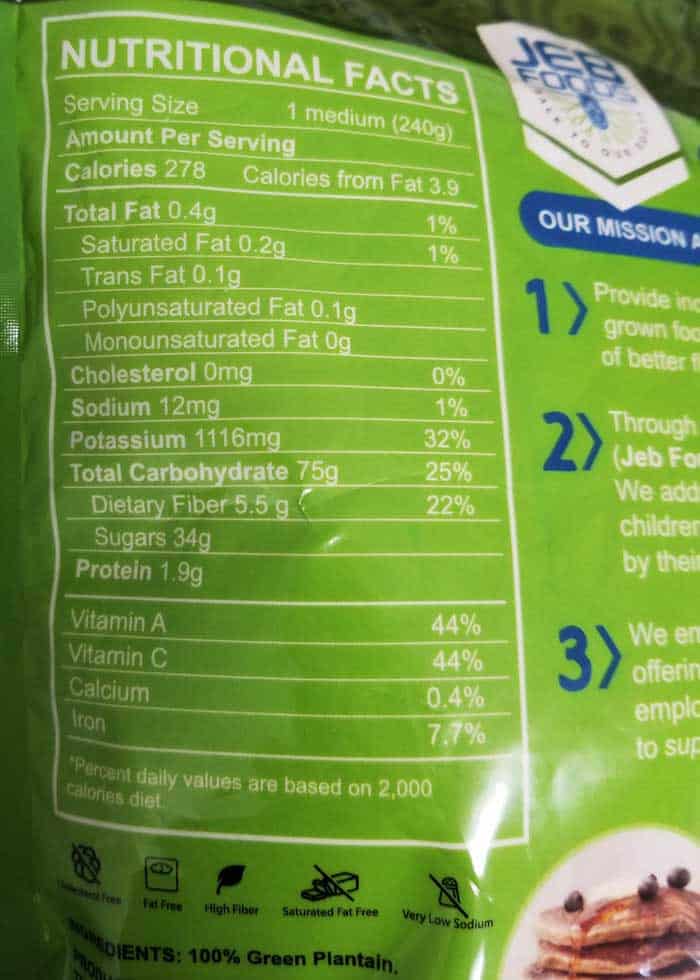
8. Versatility
When it comes to versatility, plantains win in the plantain vs banana contest. Sure, you can eat bananas raw, frozen or cooked, but there are numerous ways you can cook plantains and so many different dishes to make with them.
You can grill plantains with fish or other meat, add them into soup. Fry them until they caramelize and you have a tasty side. You can mash or bake plantains just like you would potatoes. If you prefer a gluten-free diet, plantains make a great option to use in your recipes.
Corviche is a family favorite – it is deep-fried mashed green plantain and fish.
9. Storage
Bananas ripen faster than plantains and need to be stored by themselves separately from other fruits since they produce ethylene gas and can cause other fruits to spoil quicker.
On the other hand, it’s perfectly fine to store plantains with vegetables like potatoes, squash and onions.
It’s best to allow bananas to ripen at room temperature, but if you want to slow the process, you can store them in the refrigerator or wrap them with plastic wrap.
Learn more about bananas in our huge guide.
5 Names for Plantain
- English: cooking banana, green banana
- Spanish (in many Latin American countries): Plátanos
- Portuguese: Banana da terra
- Cuba: Tostones
- Ivory Coast: Aloco
5 Names for Banana
While the word “banana” is used all over the world for this popular fruit, many cultures use their own local word such as:
- Spanish (various countries of Latin America): Plátano
- Portuguese: Banana
- Dominican Republic, Puerto Rico, Nicaragua, Ecuador: Guineo
- Venezuela: Cambúr
- Bolivia, Colombia: Banano
Spanish Words for Plantain
- Ripe plantain: Plátano maduro. A truly ripe plantain will be mostly black.
- Green plantain: Plátano verde. Also called just “verde”.
Learn more Spanish words for ordering food.
Which is healthier? Banana vs Plantain
Both plantains and bananas provide a similar nutrient composition (see above chart), so it would be difficult to say one is healthier than the other. Both contain fiber which helps with digestion.
Additionally, both are heart-healthy since they provide magnesium and potassium. However, if you’re concerned about your sugar consumption, you may wish to opt for plantains since they are lower in sugar than bananas.
Of course, the way they are prepared will affect their healthiness. Deep fried plantain will be less healthy than a fresh banana. And a banana split, well, let’s just say that no one eats that for heath reasons.
Do plantains taste like bananas?
No, plantains don’t taste like bananas. Plantains don’t have a “banana” flavor because they are a distinct fruit and aren’t eaten raw like most bananas. When ripe, plantains are sweet like bananas, but it’s a different flavor.
Are plantains and bananas the same on the inside?
The answer is not exactly. The inner flesh of plantains is a firmer yellow or pink while the inside of bananas is softer and cream-colored.
What do you eat with fried plantains?
Like potatoes, fried plantains will go with just about anything but in Latin and Central America, they’re often served with peas and rice and dishes popular dishes like Jamaican jerk chicken, brown stew chicken and Jamaican oxtail stew.
Plantain vs banana trees
Although plantain and banana tree plants may look alike, you can distinguish between the two by the shape of their leaves.
The shape of plantain leaves is shorter and described as similar to shoe soles. Banana leaves tend to be longer and resemble a sword.
Are plantains and bananas both considered fruits?
Yes, both plantains and bananas are considered fruits. More specifically they are considered as berries? The reason for this is because fruits that contain their seeds on the inside are botanically classified as berries.
Another interesting tidbit is both plantain and banana tree plants are considered herbs because their stems are succulent rather than woody.
Where are plantains eaten?
Plantains are eaten all over the world but most widely in Africa, the Caribbean and Latin America. In these locations, you will discover popular dishes containing plantains such as matoke in Uganda and tostones in Latin America.
Check out some of these food guides. These countries all use plantain as a staple food: El Salvador, Bolivia, Haiti, Peru, Ecuador, Nicaragua, and Uganda.
Where are plantains and bananas grown?
Both fruits originated in Southeast Asia but are grown in tropical regions such as Africa, India, China, and Central and South America.
How many varieties of bananas and plantains are there?
There are at least 100 varieties of plantains and more than 1,000 varieties of bananas.
Two of the biggest groups of plantains are Horn and French.
Some of the most popular types of bananas include:
- Cavendish
- Blue Java (also known as ice cream banana)
- Goldfinger
- Big Mike (Gros Michel)
- Burro
- Red banana
Wrapping It Up
Plantains and bananas have a similar appearance and both are fairly equal in nutritional benefits. Beyond that, taste, cooking methods and versatility present distinctive differences between the two fruits.
Have questions about plantains and bananas that haven’t been answered in this article? Let us know in the comments.

